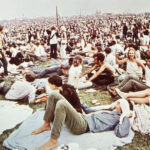The clatter of restless feet and pent-up energy echoed through the gymnasium at Springfield College in Massachusetts during the winter of 1891-1892. These weren’t just any students; they were young men enrolled at the International YMCA Training School (now Springfield College), mandated to participate in indoor activities to expend the vigor usually reserved for the football and lacrosse fields of warmer months. Their instructor, James Naismith, a 31-year-old graduate student, faced a challenge: how to engage these young men who found the standard gymnasium fare of marching and calisthenics a poor substitute for the thrill of outdoor sports. It was in this specific environment, within the walls of Springfield College, that basketball was invented.
The Spark of Innovation: James Naismith and a Need for a New Game
James Naismith wasn’t just a physical education instructor; he was a man deeply immersed in the principles of physical activity and recreation. Having previously earned a theology degree from Presbyterian College in Montreal, his passion for athletics led him to Springfield. Here, he studied under the esteemed Luther Halsey Gulick, a pioneer in physical education and recreation in the United States. Gulick, recognizing the need for engaging indoor sports, had even introduced a course on the psychology of play during the summer of 1891, emphasizing the creation of a novel indoor game – one that was “interesting, easy to learn, and easy to play in the winter and by artificial light.” While no one initially took up Gulick’s challenge, the predicament facing Naismith’s gymnasium class provided the perfect catalyst.
The faculty was grappling with the students’ palpable boredom and disinterest in the required exercises. Two instructors had already attempted and failed to devise engaging activities. During a faculty meeting addressing this issue, Naismith voiced his belief that the problem lay not with the students, but with the “system” of activities being used. He argued for a more “recreative nature” in the exercises, something that would tap into their innate “play instincts.” Luther Gulick, recognizing Naismith’s insight, entrusted him with the task: “Naismith,” he declared, “I want you to take that class and see what you can do with it.”
From Peach Baskets to Global Phenomenon: The Genesis of Basketball
Naismith embraced the challenge, setting out to invent a game that was both simple to grasp and sufficiently complex to maintain interest. It needed to be adaptable to indoor spaces or any ground, accommodate a large number of players simultaneously, and provide ample exercise without the physical roughness of sports like football or rugby, which posed a risk of injury in confined gymnasiums.
His creative process involved drawing inspiration from various games of the era. He incorporated passing from American rugby, the jump ball from English rugby, the concept of a goal from lacrosse, and the ball’s shape and size from soccer. Crucially, he recalled “duck on a rock,” a childhood game that emphasized tossing a ball at a target rather than forceful throwing. This inspired the core principle of basketball: a goal that couldn’t be aggressively attacked but required finesse. Naismith envisioned “a goal with a horizontal opening high enough so that the ball would have to be tossed into it, rather than being thrown.”
Seeking suitable goals, Naismith approached the school janitor for two 18-inch square boxes. Instead, he received two peach baskets. These were then nailed to the gymnasium balcony’s lower rail at each end of the court. Serendipitously, the height of this rail was ten feet – the standard basketball hoop height to this day. Initially, someone had to manually retrieve the ball from the basket after each score, but it wasn’t long before the bottoms of the peach baskets were removed, allowing the ball to fall through.
With the equipment in place, Naismith formulated the 13 original rules of “basket ball.” These rules covered aspects like ball movement, fouls, and gameplay structure. A referee was appointed, and games were divided into two 15-minute halves with a 5-minute rest period. The rules were typed up and posted, and soon after, the first basketball game took place. Teams of nine – three centers, three forwards, and three guards – were formed. Naismith tossed the ball between the two opposing centers at mid-court, and just like that, the game of basketball was born in Springfield, Massachusetts.
Conclusion: Springfield, Massachusetts – The Enduring Legacy of Basketball’s Birthplace
The invention of basketball at Springfield College was not a random occurrence, but rather the result of a specific need, a creative mind, and a supportive environment. James Naismith’s innovative spirit, coupled with Luther Gulick’s forward-thinking approach to physical education, laid the foundation for a sport that would transcend its humble beginnings in a Massachusetts gymnasium to become a global phenomenon. The next time you hear the squeak of sneakers on a basketball court, remember its origin story – a tale that began in Springfield, Massachusetts, where peach baskets and a set of 13 rules sparked a sporting revolution.

